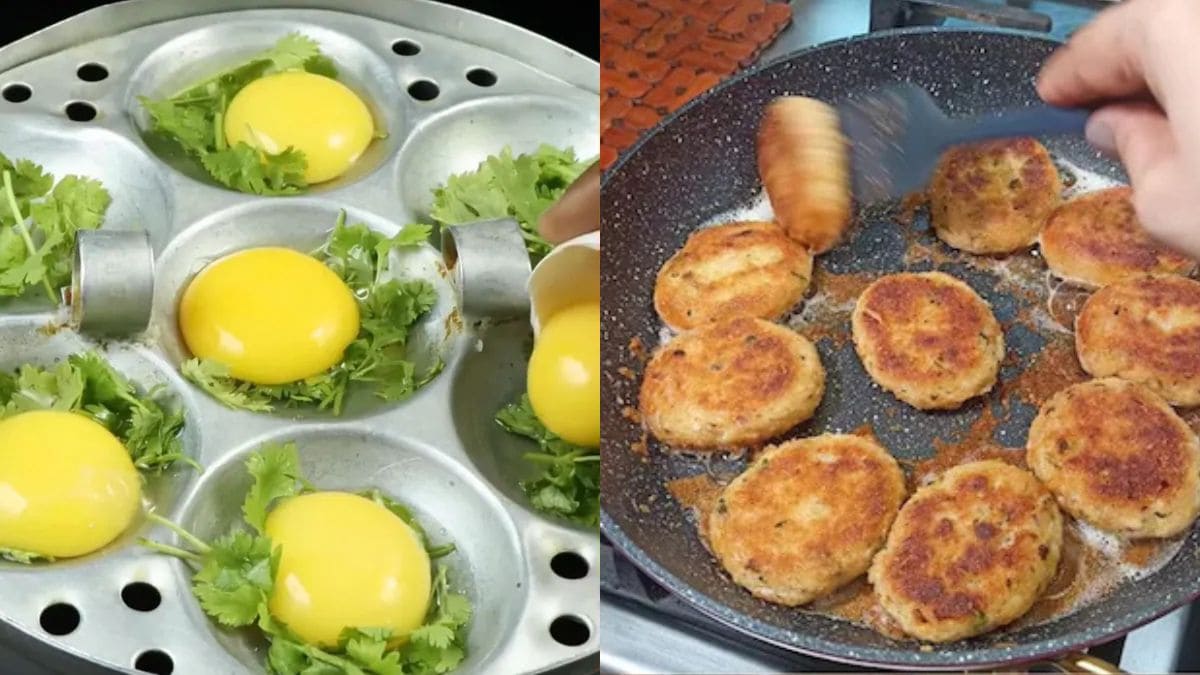Chhath Puja 2025: The smell of ghee fills the air as women gather by the riverbank, singing songs that have travelled generations. Brass plates glint under the morning sun, and at the centre of every offering lies Thekua - a crisp, golden treat that holds faith, patience, and love in every bite. As Diwali lights fade, this humble sweet becomes the heart of Chhath Puja, a festival where devotion rises with the sun and rests in gratitude by dusk. This year, Chhath Puja will be celebrated from October 25 to October 28. The four-day ritual, observed mostly in Bihar, Uttar Pradesh, and Jharkhand, honours Lord Surya and Chhathi Maiya. Women fast without water, seeking prosperity and peace for their families. Amid all the rituals, it is food - made with faith and shared in simplicity - that brings warmth to the celebration. And no food symbolises that better than Thekua.
Also Read: How To Make Sattvik Lauki Ki Sabzi For Chhath Puja Fasting (Nahay Khay Special)
Significance Of Thekua In Chhath Puja
To call Thekua a sweet would be underselling its meaning. It is devotion you can taste. No Chhath Puja is complete without it. Prepared as prasad for Chhathi Maiya, Thekua is offered with folded hands and deep faith. It is believed that this offering brings happiness and good fortune to the family observing the fast.
Beyond rituals, Thekua holds a permanent place in the cultural rhythm of Bihar. It is a snack for travel, a festive staple, and often a memory shaped by generations. Wooden moulds, called sansis, press intricate designs that carry family traditions forward.
Also Read: Chhath Puja 2025: 12 Traditional Dishes That Always Make The Festive Feast Joyful
Chhath Puja 2025: How To Make Thekua At Home
Also known as Khajuria or Thikri, Thekua is made with simple ingredients like wheat flour, jaggery, ghee, and cardamom. Some recipes use coconut, khoya, or dry fruits to enhance the taste. The method is easy but requires attention to detail.
1. Knead The Dough
Knead wheat or refined flour with lukewarm water or milk. Milk gives a softer texture. Add jaggery syrup, ghee, and coconut or khoya for added richness. The dough should be soft but firm enough to hold shape.
Photo Credit: iStock
2. Shape It Properly
Thekua should not be rolled too thin or too thick. A medium thickness helps it cook evenly. Traditionally, wooden moulds are used to give it a decorative imprint.
3. Fry On Medium Heat
Heat oil on medium flame. If the oil is too cold, Thekua will turn hard; if too hot, it will burn. Fry until golden brown on both sides.
4. Store It Right
Once cooled, store in an airtight container. Thekua stays fresh for several days, making it perfect for travel or festive gifting.
Also Read: Chhath Puja 2025: 12 Traditional Dishes That Always Make The Festive Feast Joyful
Is Thekua Healthy? Health Benefits Of Thekua
Thekua is one of the cleanest festive sweets you can make at home. It contains no preservatives and uses simple, local ingredients. Jaggery adds minerals like iron and magnesium, while ghee provides good fats that support digestion.
When made with whole wheat and fried in moderation - or baked - Thekua becomes a balanced festive treat that fits into mindful eating habits. It offers energy, nostalgia, and comfort, all in one bite.
Modern Twists To Traditional Thekua
Home cooks today are giving Thekua a modern spin. Air-fried and baked versions are now common. Some use multigrain or ragi flour, while others drizzle honey or dark chocolate for fusion-style sweets.
On social media, reels and posts capture families making Thekua together, blending nostalgia with creativity. The dish has travelled from kitchen shelves to digital screens - proving that even a century-old recipe can stay relevant in modern homes.
Chhath Puja 2025: Other Sweet Dishes Made During Chhath
Chhath celebrations are incomplete without a variety of sweets prepared for the occasion.
1. Rasiyaw: A traditional rice pudding made with milk, ghee, jaggery, and dry fruits. It is usually eaten after breaking the fast, offering both comfort and energy.
Photo Credit: Canva
2. Kasar Laddoo: Made with coarsely ground rice, jaggery, ghee, and cardamom, these laddoos are rich, rustic, and long-lasting. They capture the simplicity and soul of Chhath cuisine.
Together, Thekua, Rasiyaw, and Kasar Laddoo form the sweet essence of the festival - rooted in tradition and filled with meaning.
Thekua: A Sweet That Symbolises Faith
When the sun sets and the river glows orange, families offer prayers with soops filled with fruits, sugarcane, and Thekua. As chants fade into the evening, the sweet is shared among neighbours - a gesture that represents faith, togetherness, and gratitude.
Thekua remains what it has always been - a dish of devotion that connects generations. It is simple, golden, and timeless.
